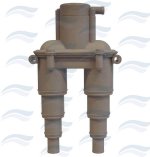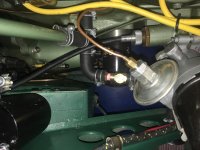-
 Hi Guest!
Hi Guest!
If you appreciate British Car Forum and our 25 years of supporting British car enthusiasts with technical and anicdotal information, collected from our thousands of great members, please support us with a low-cost subscription. You can become a supporting member for less than the dues of most car clubs.
There are some perks with a member upgrade!**Upgrade Now**
(PS: Subscribers don't see this gawd-aweful banner

Tips
- We have a special forum called "Member Articles" where you can submit actual articles for consideration for publication. Learn More
- Don't have an Avatar? If not, your avatar will default to the 1st character in your username. Go into "Account Details" to change your Avatar.
- Some basic forum navigation info: click
Hey - did you know if you click on the title of a thread it will take you to the first unread post since you last visited that thread?
- Hey Guest - Is your British Car Club in our Clubs database? If not, send me a PM - Basil

- Looking for a local club? Click the "Clubs" tab above and browse hundreds of clubs world-wide.
- Add Android or iPhone APP: click
- Did you know - any picture or video you add in your posts in any marque-specific forum will also get added to the Media Gallery automatically.
- A few more tips about posting and replying: click
- Hey there Guest - be sure to keep your profile page up to date with interesting info about yourself: learn more
- More tips and tricks on Posting and Replying: click
 STOP!! Never post your email address in open forums. Bots can "harvest" your email! If you must share your email use a Private Message or use the
STOP!! Never post your email address in open forums. Bots can "harvest" your email! If you must share your email use a Private Message or use the  smilie in place of the real @
smilie in place of the real @
- Want to mention another member in a post & get their attention? WATCH THIS

- So, you created a "Group" here at BCF and would like to invite other members to join? Watch this!
- Hey Guest - A post a day keeps Basil from visiting you in the small hours and putting a bat up your nightdress!
- Hey Guest - do you know of an upcoming British car event?
 Pretty Please - add it to our Events forum(s) and add to the calendar! >> Here's How <<
Pretty Please - add it to our Events forum(s) and add to the calendar! >> Here's How << 
- Hey Guest - you be stylin'
Change the look and feel of the forum to fit your taste. Check it out
- If you run across an inappropriate post, for example a post that breaks our rules or looks like it might be spam, you can report the post to the moderators: Learn More
- If you would like to try some different "looks" or styles for the site, scroll to the very bottom, on the left and click the Style Selector.
You are using an out of date browser. It may not display this or other websites correctly.
You should upgrade or use an alternative browser.
You should upgrade or use an alternative browser.
Oil catch tank
- Thread starter mgtf328
- Start date
Bob_Spidell
Yoda
Offline
My catch tank vents to atmosphere via a filter. Why would you want to direct this stuff back into the intake system?
I'll bite: So you're not dumping it into the air we all breathe (why engines went from 'road draft' tubes, to carburettor tubes to PCV systems; most cars still use PCVs, for the same reason). It's generally agreed that combusting blow-by gasses is at least marginally less harmful than dumping them into the atmosphere (which may be true only if you have a catalytic converter, but the thought counts).
I think, ideally, you have an 'oil-air separator'--i.e. a catch can--and a PCV. I put a separator on my Mustang GT, it traps about a teaspoon of oil every thousand miles.
andrea
Jedi Knight
Offline
Low cost Chinese tank easy to control and unload in a NOT invasive position
https://photos.app.goo.gl/9TrxtMQWv3kNFs2s9
https://photos.app.goo.gl/9TrxtMQWv3kNFs2s9
andrea
Jedi Knight
Offline
Hi Stevesteveg; The Ducati Diana has a built-in recycling road draft tube - reaching from the engine to the tail light. This allows vapor to condense and run back into the engine. [ATTACH=CONFIG said:59040[/ATTACH]
Long time ago I have one similar to this 175 cc model DUCATI "CALIFORNIA" because have the seat fringed as Western and a knees protection with two chromed clack sons a poor imitation of Americans Motorcycles- but a strong and reliable motorbike
Andrea, RAC68 suggested in a previous post that the can should be mounted high enough to avoid the possibility of initiating a syphoning effect. I can't personally see how you could drain the sump this way but I was wondering whether you took any precautions and what your experience is mounting the can so low.
AJ
AJ
Offline
If the can is connected to the T at the top of the valve cover, one won't get syphoning. If the can is connected to the vertical pipe from the side cover to the T, much more oil will be collected in the can. One of my experiments showed that.Andrea, RAC68 suggested in a previous post that the can should be mounted high enough to avoid the possibility of initiating a syphoning effect. I can't personally see how you could drain the sump this way but I was wondering whether you took any precautions and what your experience is mounting the can so low.
AJ
Offline
Hi Lin,John,
So, what did you do for pressure relief and venting of the rocker cover?
Lin
That was one of my PCV experiments. Most PCV valve installations, including my early one, don't have a filtered air inlet.
So, I put a small vent filter on one leg of the T atop the rocker cover with an orifice behind it for an air inlet. The other horizontal leg of the T was blocked, so that air would enter the T, go into the rocker cover, down around the push rods to the crankcase. I had a hose off the vertical pipe that normally goes from the side cover to the T that went to the oil catch tank and then to the PCV valve.
Anyway, the catch tank collected a lot of oil, so that idea was abandoned.
andrea
Jedi Knight
Offline
 Hi MGTF
Hi MGTFI considered that the air filter on the TOP of the can catch tank can avoid the siphon problems -that can appear only in presence of LIQUID VACUUM in the OIL circulation - Engine OIL level are lower - and on the pipe we have only oil vapors that then condenses in the catch
However your observation can be correct , and I seriously consider the add of a little air inlet valve near the top T joint -
BUT catch can was applied some Years ago and no siphon problems was observed during this time
Last edited:
D
Deleted member 21878
Guest
Guest
Offline
i added the filter at the side cover/verticle vent pipe. my verticle vent pipe is plugged so nothing gets pulled thru it. the side cover now just lets air in. all the vaccum comes out the valve cover. it is my understanding that allowing fresh filtered air into an engine is a good thing for the metal parts and the oil.
To control the amount of air and also the amount of vaccum inside the engine, i bought a small paint gun valve from HF. then i hooked up my system and ran the car. i turned the valve control to get the vacuum to no more than 1" of hg. probably should even be less but hard to get a good reading below that. when i changed the oil last time, i could hear air being pulled thru the filter while draining the oil.
after the valve was set, i watch the reading over various RPM's. the reading of 1" never changed.

if you look closely you can see the filter down in the right bottom corner of the pic. it is kind of hidden behind the frame.
To control the amount of air and also the amount of vaccum inside the engine, i bought a small paint gun valve from HF. then i hooked up my system and ran the car. i turned the valve control to get the vacuum to no more than 1" of hg. probably should even be less but hard to get a good reading below that. when i changed the oil last time, i could hear air being pulled thru the filter while draining the oil.
after the valve was set, i watch the reading over various RPM's. the reading of 1" never changed.

if you look closely you can see the filter down in the right bottom corner of the pic. it is kind of hidden behind the frame.
Bob_Spidell
Yoda
Offline
FWIW, in normally-aspirated aircraft--with both manifold pressure and ambient air pressure readings available--engines always pull at least 1" of Hg negative air pressure (i.e. 'vacuum'), even at WOT. Some highly-tuned engines may be less, but a 1" pressure loss in the manifold and throttle is pretty much a truism.


